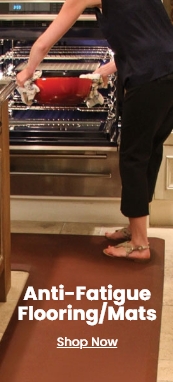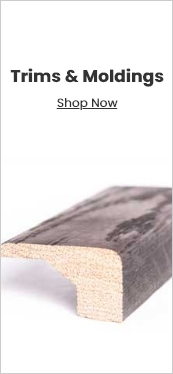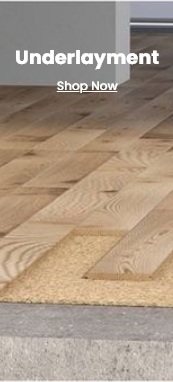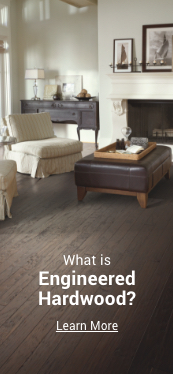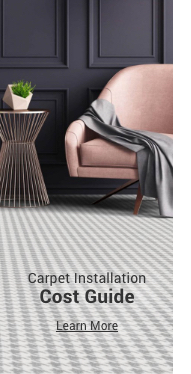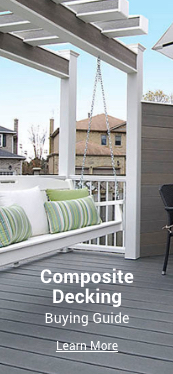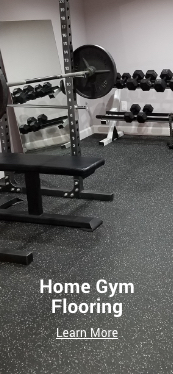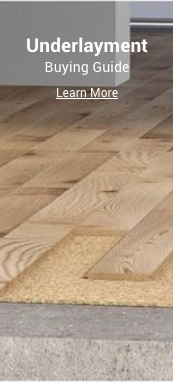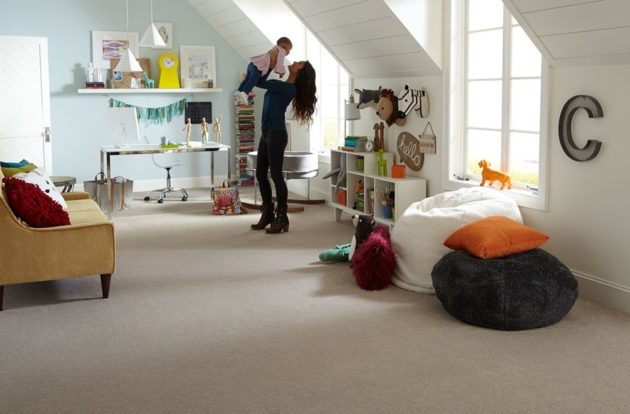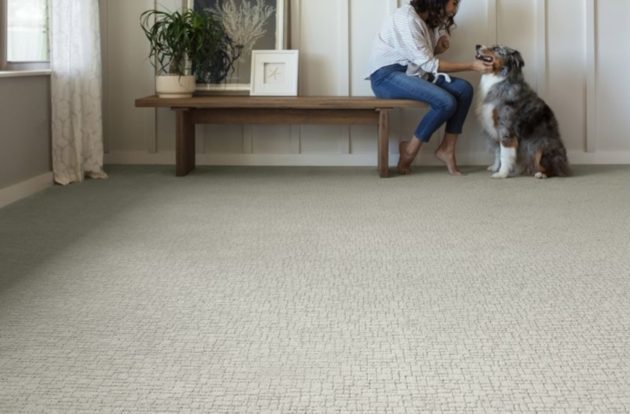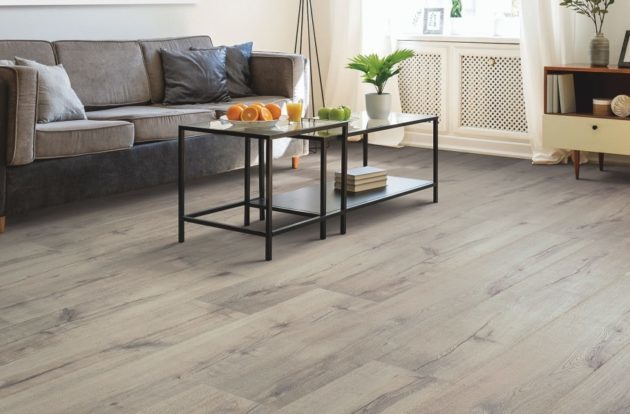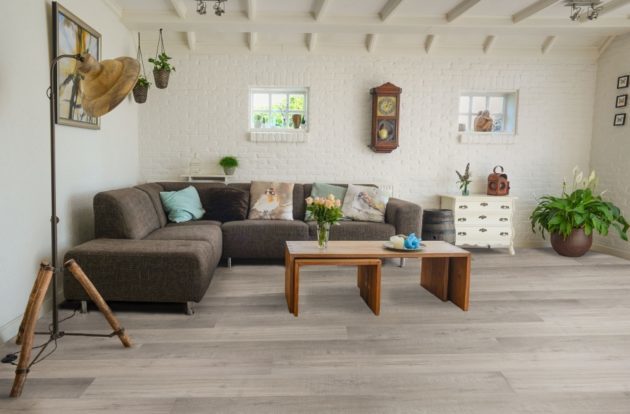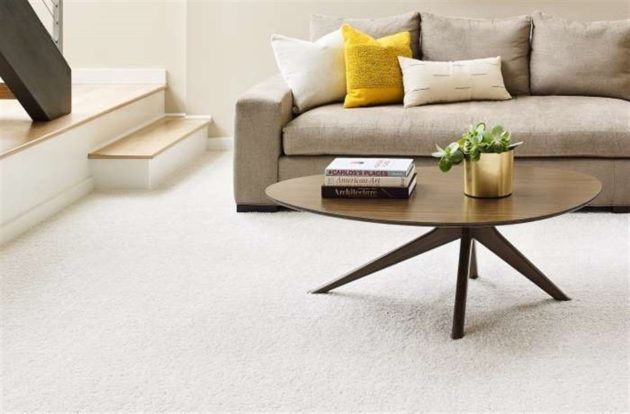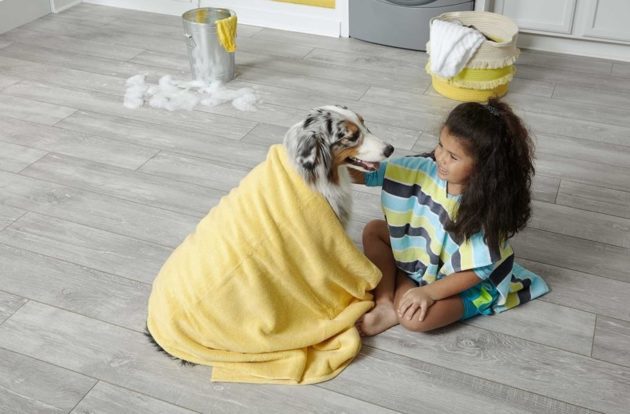What Are VOCs in Floors? A Guide to Non-Toxic Flooring
By Ciana Gitre
| Fact Checked By: Katy Engelhard
Published: February 19, 2021 | Updated: June 2, 2022
When it comes to air quality, you may not think of everyday materials you can find around your home. However, seemingly harmless building products, like flooring, can emit toxic chemicals that leave you and your loved ones (including furry friends) with medical concerns. We compiled all you need to know on VOCs, FloorScore and GreenGuard certifications, and non-toxic flooring.
Because for humans and animals alike, the best defense against toxins is prevention. Ready to relax and breathe easy?
What Are VOCs?
Firstly, volatile organic compounds, otherwise known as VOCs, are a part of a large group of chemicals you can find in everyday household products. Once VOCs are in your home, it can be challenging to notice harmful exposure, making it hard to seek action in removing them.
We know that the flooring option you choose shouldn’t cause you to question your safety and health. Therefore, you’ll find everything you need to know about VOCs and how they affect you below.
| Related Content >> Best Low-Voc Flooring Options for a Healthier Home |
Can VOCs Affect Your Health?
Yes, they can negatively impact your health depending on VOC concentration and length of exposure. VOCs can cause a range of uncomfortable health concerns if not recognized in your space right away.
* In addition, people with known chemical sensitivities and asthma may experience heightened reactions in high-VOC environments.
The total VOC content or “TVOC” determines the combined concentration of VOCs in the air. VOCs can be measured in several ways, but the most common is milligrams per cubic meter (mg/m3).
TVOC Concentrations
- Low: Less than 0.3mg/m3
- Acceptable: 0.3 to 0.5 mg/m3
- Marginal: 0.5 to 1 mg/m3
- High: 1 to 3mg/m3
Short term VOC effects:
- Throat, eye, and nose irritation
- Nausea/vomiting
- Headaches and dizziness
- Worsening of asthma symptoms
Long term VOC effects:
- Liver and kidney damage
- Cancer
- Central nervous system damage
Commonly Found VOCs in Homes
VOCs are rightfully scary chemicals. However, many VOCs can be easily removed or reduced from your home with proper knowledge.
We included four of the most common VOCs and where you might find them. For more information on consumer products, the Consumer Product Information Database is a great resource.
1. Formaldehyde
- Where to Find It: The VOC, Formaldehyde, is frequently found in floor lacquers, space heaters, fuel-burning appliances, and molded plastics.
- How to Reduce It: To reduce toxic fumes, look for formaldehyde-free products. Today, many floor lacquers come non-toxic and offer impeccable shine.
- Likewise, for plastic items, look for BPA-free items throughout your home to reduce the risk of formaldehyde.
2. Toluene
- Where to Find It: Before adding that fresh coat of paint to the wall, check the back of the can for the VOC, Toluene.
- How to Reduce It: If you choose to move forward with the paint, make sure to open surrounding windows in the area to ensure proper ventilation.
3. Benzene
- Where to Find It: Benzene is one of the biggest VOCs to look out for in building and home materials. Look for it in carpeting, glue, paint, detergents, and synthetic rubber.
- How to Reduce It: If benzene poisoning occurs after inhaled, touched with exposed skin, or swallowed, take immediate action.
- For complete removal of toxic chemicals, look for keywords like fragrance-free, the “Safer Choice” label on bottles, and EPA seal of approval.
4. Acetone
- Where to Find It: Acetone is a VOC found in nail polishes and removers, paste waxes, lacquer, and upholstery fabrics.
- How to Reduce It: Many brands make safer alternatives for these products, as long as you seek the acetone-free label while shopping.
| Related Content >> What Is the Best Homemade Floor Cleaner? 10+ DIY Ideas |
6 Ways to Reduce VOC Exposure
It may be overwhelming to realize all the different ways VOCs can integrate into your daily routine. However, you can significantly reduce your VOC exposure in your home with some extra time and effort.
- Proper installation: Follow your manufacturer’s recommendations on installation and ventilation. This will allow your flooring to expand in warm months and help the “off-gassing” lifetime be significantly reduced.
- Air out your space: You can significantly reduce VOC fumes by removing your products from their packaging in an open area for either a couple of days or a week. When in doubt, leave it in the shed or garage for a while.
- Review your inventory: It’s a great idea to go through your home’s potential sources of VOCs. If you are unsure about items, it’s best to reach out to an indoor air-quality professional.
- Use a dehumidifier: Many VOCs heavily off-gas in higher humidity. Therefore, we recommend keeping your home’s humidity at 45 percent or below.
- Spring and summer renovations: Warmer weather allows you to comfortably leave your house open during projects that require various tools and products that may contain VOCs.
- Unscented products: Everyone wants a great smelling house after cleaning, but did you know most artificially scented products have VOCs? Thank us later and opt for fragrance-free products instead.
Are There Regulations for VOCs?
VOCs are recognized by several organizations worldwide. In the United States, the U.S. Food and Drug Administration (FDA) and the U.S. Environmental Protection Agency (EPA) have regulations and testing set in place.
There are standards and testing to determine what’s safe to use to ensure health and protection in residential, commercial, and industrial settings.
In 1999, the U.S. put the Clean Air Act in place, limiting manufacturers’ VOC content within products and clear labels indicating contents. Also, at the federal level, the U.S. EPA regulates VOCs according to 40 CFR 59, the National Volatile Organic Compound Emission Standards For Consumer And Commercial Products.
For example, VOC controls for products are typically based on the application of products, such as aerosol coatings, architectural coatings, consumer products, and automobile refinish coatings.
With having a low-VOC rating and Greenguard and FloorScore certifications, you know your non-toxic flooring product is safe for families, pets, employees, and consumers. To stay updated on all EPA VOC inventories, visit https://www.epa.gov/air-emissions-inventories.
What are Phthalates?
Like VOCs, phthalates are industrial chemicals in plastics, like PVC, that make them more flexible and durable. Additionally, phthalates can often be found in food packaging, cosmetics, beverage bottles, household cleaners, flooring, and artificial grass.
| Related Content >> Rubber Flooring Safety: 5 Questions |
How Can phthalates Affect Your Health?
In recent years, researchers have found adverse long-term effects of phthalates on both children and adults. For instance, many people have had noted increased breathing problems and migraines.
Long term phthalate effects:
- Asthma
- Worsening of prior medical conditions
- Behavioral issues
- Attention-deficit hyperactivity disorder (ADHD)
- Breast cancer
- Obesity
What Regulations Do Phthalates Have?
Phthalates, like VOCs, have found their way into consumer products and materials. Further, the Consumer Product Safety Commission (CPSC) has recently pushed and permanently banned products with more than 0.1% of phthalate content from children’s toys.
In addition, the FDA also keeps a close watch on food contact materials and consumer products. However, each U.S. state has different regulations and initiatives against phthalates.
| Related Content >> EVA Foam Safety: Is Formamide Toxic in Puzzle Play Mats? |
What Does a FloorScore Certification Mean?
The EPA has set standards for products that meet the Indoor Air Quality (IAQ) Certification standard. The most recognized standard is FloorScore. FloorScore does in-lab VOC testing and certifies flooring materials, underlayments, wall bases, and adhesives that comply with IAQ emissions.
The Resilient Floor Covering Institute (RFCI) is an independent, privately held label that created FloorScore with Scientific Certification Systems (SCS) to ensure unbiased testing and auditing. Above all, FloorScore prides itself in providing certifications for the best non-toxic flooring.
Also, flooring manufacturers and consumers use the FloorScore label to gauge materials that provide satisfactory air quality. However, phthalates are not a recognized component of the FloorScore certification.
| Related Content >> Vinyl Flooring Buying Guide: Find the Best Vinyl Flooring |
What Does a GreenGuard Certification Mean?
Similarly, GreenGuard Certifications ensure non-toxic flooring that is safe for your family, friends, and pets. This certification is part of the Indoor Air Quality Testing Program to ensure that carpet, carpet pads, and adhesives emit low VOCs and phthalates low emissions.
These scientifically established standards ensure that the materials you have give you the best possible indoor air quality in any residential or commercial environment. GreenGuard testing is rigorous. Products like carpet must pass a test covering over 10,000 VOCs for chemical and particle emissions.
To ensure the quality of GreenGuard labeled items, companies must have their products annually retested.
CRI Green Label Plus Certification
The most common type of certification for carpeting is CRI Green Label Plus. This program was created to make customers feel reassured about the carpet products they purchase. From carpet to adhesive cushion products, CRI Green Label Plus covers it all.
Green Label Plus has rigorous testing and standards for a thorough certification process to ensure non-toxic flooring. Also, carpets must undergo a 14-day test covering a list of 35 compounds from California Section 01350 Special Environmental Specifications.
Builders, architects, specifiers, and homebuyers use the Green Label Plus certification for low chemical emissions in their commercial and residential spaces.
An impartial party, the American National Standard Institute (ANSI), has endorsed CRI for testing indoor air quality. Notably, CRI Green Label Plus is the only ANSI-accredited green carpet program in the U.S.
SHOP ALL CRI GREEN LABEL PLUS CARPET
Summary of Non-Toxic Flooring
To summarize, VOCs can leave their mark in your home, but it’s manageable to remove and moderate them. Flooring manufacturers and retailers are working towards non-toxic flooring for commercial and residential spaces.
Most importantly, at IncStores, almost all of our flooring products are FloorScore and GreenGuard certified. Rest assured, your safety, health, and well-being are a top priority. Ready to start shopping?
SHOP ALL FLOORING ORDER FREE SAMPLES











